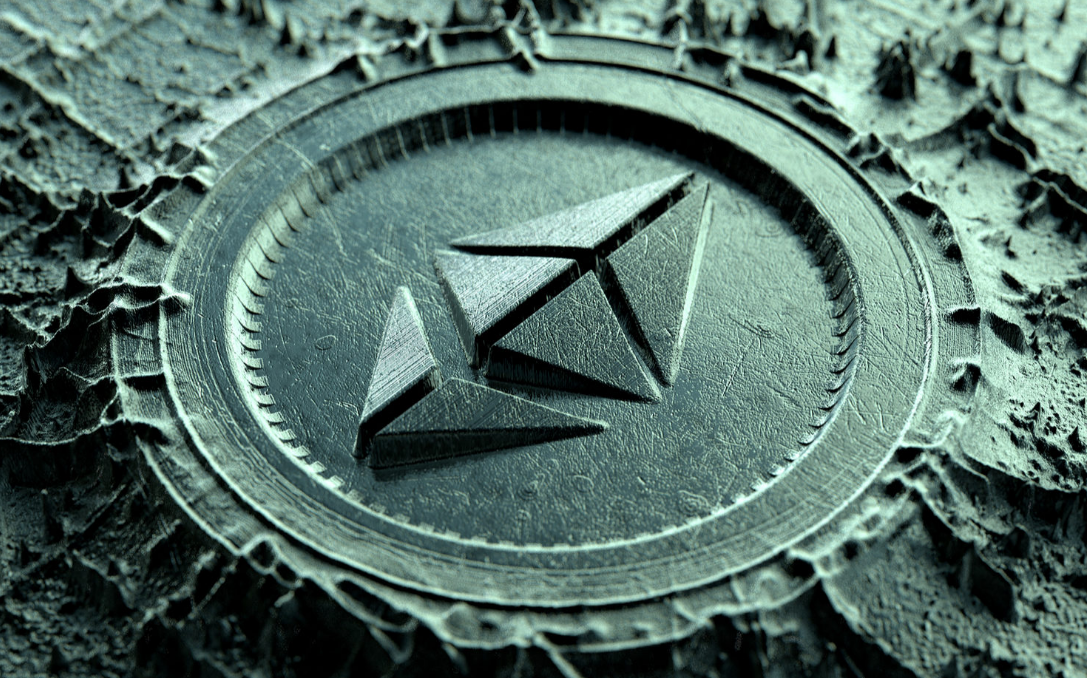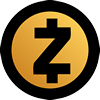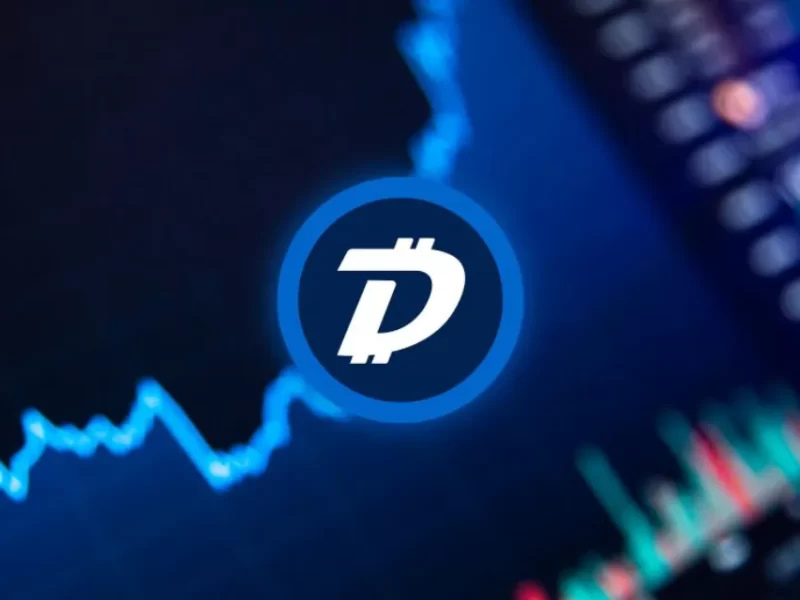Ethereum is a platform powered by blockchain technology that is best known for its native cryptocurrency, called ether, or ETH, or simply Ethereum. The distributed nature of blockchain technology is what makes the Ethereum platform secure, and that security enables ETH to accrue value.
ETH Price:
|
What is Ethereum (ETH)?
1. Who Controls Ethereum (ETH)?
Ethereum is not really controlled by anyone, in the sense that there is no omnipotent entity or a conspirator running it from the shadows. Ethereum exists solely through the participation and work of the community of its users and developers. They are, collectively, referred to as the Ethereum network. But, who controls the Ethereum network, you may ask? The answer is the same as for Ethereum itself: nobody controls it, as it is a genuinely decentralized platform which was originally built by crowdsourcing the work of a community of programmers. Once the code and network infrastructure were in place, the network itself was handed over to all the users who wanted to participate in it.
Yet, what about the Ethereum Foundation, is its head the person who controls Ethereum after all? Once more, the answer is negative, as this organization serves only to support and promote the Ethereum platform, with no stake in running the network itself. The same goes for the inventor of Ethereum, Vitalik Buterin who surely has an interest in the operation of Ethereum, yet without the ambition or capacity to “control” it. Finally, this is who controls Ethereum in reality: it is the community of its users whose resources and commitment keep the ETH alive and expanding.
2. Who Created Ethereum (ETH)?
Vitalik Buterin, a Russian-Canadian entrepreneur and programmer from Toronto, first envisioned Ethereum when he was 19-years-old.
In 2011, the year Buterin first grew interested in Bitcoin, Buterin co-founded the online news website Bitcoin Magazine, writing hundreds of articles on the cryptocurrency world. He went on to code for the privacy-minded Dark Wallet and the marketplace Egora.
Along this journey, he came up with the idea of Ethereum, a platform inspired by Bitcoin, but that could go beyond the financial use cases.
He released a white paper in 2013 describing an alternative platform that would allow developers to create their own decentralized applications using a built-in programming language. Many developers were drawn to this idea because these new applications would be accessible to a global audience, highly secure, and much faster to build because there are no intermediary services to integrate.
To accomplish this, Ethereum makes it easy to create smart contracts, code that automatically creates an outcome when certain conditions are met. For his work, Buterin was also named a 2014 Thiel fellow, winning a $100,000 grant to work on Ethereum.
3. Ethereum (ETH) Pros and Cons
Ethereum (ETH) Pros:
- Well-known Founder And An Expanding Developer Community
- Ethereum Is Decentralised
- Ethereum Is More Than A Cryptocurrency
- Ethereum Continues To Attract More Businesses
- Ethereum Are a Tried-and-true Network
- Ether Is Not Capped
- More Secure Than Most Cryptos
- Ethereum Is The Hub Of The Crypto Market
- Second-Most Popular Crypto In The Market
- Institutions Continue To Find New Ways To Trade Ethereum
Ethereum (ETH) Cons:
- Rising transaction costs
- Potential for crypto inflation.
- Steep learning curve for developers.
- The Smart Contract Arena Is Extremely Competitive
- Investing In Ethereum Can Be Risky
4. The Difference Between Ethereum (ETH) and Traditional Currencies
The main difference between them is, the traditional currency is a centralized system and bitcoins are decentralized one and peer-peer systems. Hence there are no central authorities to regulate rules and regulations on a bitcoin transaction. But a traditional currency is strictly regulated by the governmental authorities. Both the bitcoins and fiat currency have values which can be used for buying and selling of goods in the market.
- Flexibility
With traditional currency functioning for five days a week and die to transaction restriction, there is a chance of freezing of currency. There is no limit in the number of currencies, being printed, and hence when there is inadequate currency, it will affect the buyers and sellers, resulting in inflation.
- No Fraudulent Activity
If you want to transact with a traditional currency system, the users have to provide personal details like name, address, phone number, and lots more. So, with the internet technology, the malicious user will be able to hack the account details of the traditional currency system easily. Traditional currency can suffer from double-spending, where the same money is used for more than one transaction.
- Reduced Cost
In a traditional banking system, for making a national transaction, it will take 2-3 working days, and the transaction fees will be high. In the case of international transactions, the transaction fee will be very higher, and it will take 15 days to complete the transaction. In a Cryptocurrency system like bitcoins, there is no transaction fee for making a national transaction. The transaction will also take place in seconds or within 24 hours.
5. Is It Safe To Use Ethereum (ETH)?
Ethereum is the name of the blockchain technology, while Ether is the token hosted on that blockchain. Ethereum 2.0 is an updated version of the blockchain that’s set to roll out later this year or early next year, and it claims to use 99.95% less energy than the current technology.
When Ethereum becomes more energy efficient, it could acquire a competitive advantage in the crypto industry and a leg up over Bitcoin.
For any cryptocurrency to survive, it needs to have some type of real-world utility. Right now, Bitcoin is the most popular and most widely accepted cryptocurrency. However, the Ethereum blockchain is used for a variety of purposes, which gives it an advantage.
Ethereum is not only host to the Ether token, but it’s also the foundation for other applications like non-fungible tokens (NFTs) and decentralized finance. NFTs could change the way digital items are bought and sold, and the decentralized finance movement aims to revolutionize the banking industry.
6. Is Ethereum (ETH) Legal?
In Canada and the US, it is completely legal to own, buy, sell, and even mine Ethereum. The same capital gains tax laws apply to Ethereum as it would to any other asset in the eyes of the CRA and the IRS.
But when you ask if a cryptocurrency is legal, what exactly does that mean?
Ethereum is not a legal tender in any country in the world. In fact, Ethereum itself is a software network and the tokens that are held by crypto traders are called Ether, and in the new world of NFTs, you’ll often see it referred to as “ETH”.
In this scenario, Ether has not yet been adopted by any country, unlike its rival Bitcoin, which has been declared a legal tender in El Salvador.
In terms of investing or trading, Ethereum is completely legal in Canada and America. There are plenty of centralized cryptocurrency exchanges where North Americans can purchase Ether with fiat money. If they choose too, North Americans can even mine Ethereum if they choose to incur the costs of setting up a miner and the energy bills that come with it.
How Does Ethereum (ETH) Work?
Ethereum is a blockchain-based network that aims to make it easier to create applications that aren’t managed or controlled by one entity. Instead, they are governed by code.
A smart contract is simply a programmable agreement that runs on a blockchain. This technology allows users to digitize conditions governing the relationship and interactions between the two parties involved in a transaction. Once these conditions are programmed and launched on the blockchain as smart contracts, they self-execute (that is, they initiate and complete the set of transactions that they govern, as long as the predefined conditions are met).
For instance, Alice decides to borrow from Bob 1,000 tether (USDT) only if Bob deposits ether worth $2,000 as collateral. Using a smart contract, Alice could independently define the conditions that validate this deal, instead of trusting a middleman that would broker the deal. If done right, such a smart contract would autonomously release 1,000 USDT to Bob after he had deposited and locked $2,000 as collateral. Also, when Alice repays the loan, the smart contract would release the collateral and send it back to Bob.
As such, the smart contract offers a trustless system where Alice or Bob do not need to worry about counterparty risks. It also eliminates the need for middlemen. Here, Alice and Bob do not need to pay an extra fee to an intermediary or escrow service before they can conduct peer-to-peer transactions.
Interestingly, Ethereum was the first blockchain to discover and implement smart contracts as part of the functionalities of blockchains. Subsequently, this innovation unlocked more blockchain use cases and ultimately brought about the explosion of decentralized applications.
How to Make Money with Ethereum (ETH)?
In the Ethereum ecosystem, there are several ways to explore, and with the rise of defi, the available options become more and more attractive. The entry threshold has been reduced to almost zero, and some projects allow users to buy shares or provide liquidity for $10.
As more and more people begin to understand the value proposition of bitcoin, the next choice of cryptocurrency is Ethereum. Ethereum network has a huge developer community and is full of eager expectations for the upcoming Ethereum 2.0 upgrade in December.
Here are quite a few approaches for us to make money with Ethereum (ETH), such as Mining, Buying & Hold Bitcoins, Accept Payments in Ethereum (ETH), Earning Ethereum (ETH) by turning into an Affiliate, Lending Ethereum (ETH), and Micro Earnings, and Trading.
- Ethereum (ETH) Mining
- Buy & Hold Ethereum (ETH)
- Accept Payments in Ethereum (ETH)
- Determine how you’ll use Ethereum (ETH)
- Find a Ethereum (ETH) wallet
- Find a Ethereum (ETH) payment processor
- Accept Ethereum (ETH) payments
- Becoming an Affiliate
- Lending Ethereum (ETH)
- Micro Ethereum (ETH) Earnings (Faucets, Offer Wall, Short Links, Surf Ads……)
- Ethereum (ETH) Games
- Micro Ethereum (ETH) Tasks
- Trade Ethereum (ETH)
Read More: How to Make Money With Ethereum (ETH)?
How to Buy Ethereum (ETH)?
1. Things To Know Before You Buy Ethereum (ETH)
Buying Ethereum (ETH) and holding onto it in hopes it will appreciate in value, is the most common form of “investing”. As with all investing, you should never invest more than you are willing/able to lose. This is especially true with Ethereum (ETH), since it’s still a very risky investment.
The most important thing to keep in mind when buying Ethereum (ETH) is to make sure to buy only from exchanges that have proven their reputation.
Another key tip is to make sure you don’t buy all of your Ethereum (ETH)s in one trade. Instead use a dollar cost averaging method—buy a fixed amount every month, week or even day throughout the year. This ensures that you buy the most Ethereum (ETH) when it’s on the rise, and less when it’s going down in price.
2. How to Buy Ethereum (ETH) on a Crypto Exchange
- Coinbase – Secure online platform for buying, selling, transferring, and storing cryptocurrency.
- eToro – Trade and invest in a diversified portfolio, starting at $10, or practise risk-free with a virtual portfolio.
- Bitfinex – Digital asset trading platform offering state-of-the-art services for digital currency traders and global liquidity providers.
- Binance – Low trading fees, a generously wide range of leverage, and high liquidity.
- KuCoin – A large cryptocurrency exchange offering the ability to buy, sell, and trade cryptocurrencies
Read More: How To Send Ethereum from Coinbase to MetaMask
3. How to Buy Ethereum (ETH) with Cash
- Find a seller in your area who accepts cash.
- Select amount of coins and place an order.
- Receive account number from the seller.
- Deposit cash into the seller’s account.
- Upload your receipt to prove you made the deposit/trade.
- Receive Ethereum (ETH)!
4. How to Buy Ethereum (ETH) with Credit Card
Not all platforms will allow you to use a credit card to make your Ethereum (ETH) purchases. If you do choose a platform allowing such transactions, keep in mind that there may be extra fees associated with the purchase. Many credit card companies process cryptocurrency purchases via credit card as cash advances, which can incur high interest rates, among other fees.
5. How to Buy Ethereum (ETH) with Paypal
- Login to Paypal and Select Cryptocurrency
- Select ‘Ethereum (ETH)’
- Select ‘Buy’
- Choose How Much You Want to Buy
- Select Payment Method
- Hit the ‘Buy’ button
6. Should I Buy Ethereum (ETH) In 2022?
The reason Ethereum gained such massive popularity and almost flipped places with Bitcoin in June 2017 is due to its ability to run smart contracts.
Take, as an example, assets: homes, artwork, luxury cars, etc. Ethereum’s smart contracts can secure ownership of these items. Foreign investors and people around the world won’t need to run through the bureaucracy of foreign nations system in order to own a home or artwork in another country. They can use a smart contract built on Ethereum. And they can pay with Ethereum too.
The world may be interconnected thanks to the internet, but Ethereum is showing new and improved levels of interconnection for businesses and private individuals around the world.
With this in mind, the answer to the question ‘is Ethereum a good investment’ starts to look like a no-brainer.
We know why Bitcoin is a good investment – but is Ethereum an even better buy?
Bitcoin was initially meant to be a cryptocurrency — emphasis on ‘currency.’ Ethereum is different and is intended to be a platform for smart contracts.
With Bitcoin, you can store value and pay for things, while with Ethereum, you can program smart contracts, tokenize assets, and more.
Ethereum is also okay at being a payment system too, but it does not have the brand awareness and immutability of Bitcoin — plus Bitcoin is truly scarce since it’s capped at 21 million coins – while Ethereum is uncapped.
Read More: How to Buy Ethereum (ETH)?
How to Sell Ethereum (ETH)?
1. Things to Know Before You Sell Ethereum (ETH)
To get started with Ethereum (ETH), you’re going to need three things: an exchange, a wallet, and the knowledge of how to buy the cryptocurrency. This last one is easy with our guide on how to buy Ethereum (ETH), but the other two are still important. The exchange allows you to buy Ethereum (ETH) from sellers, and the wallet gives you somewhere to store it long-term.
When choosing an exchange, you should look for one with many users, good customer support and low fees. Three particularly popular exchanges with newcomers are Coinbase, Robinhood and Binance. However, there’s nothing really tying you to a specific exchange, so you can try new ones and quickly change at any time.
On the other hand, wallets can be much more complex. “Cold wallets” — physical devices holding cryptocurrencies offline — come with a steep up-front cost, but “hot wallets” — pieces of software that hold your coins on a computer — are often less secure. However, since hot wallets are fine for short-term storage and free to set up, it’s a good idea to start with them.
2. Sell Ethereum (ETH) in Cryptocurrency Exchanges
- Step 1: Set up an exchange account
- Step 2: Transfer your Ethereum (ETH) to your exchange wallet
- Step 3: Place a sell order
3. Sell Ethereum (ETH) in P2P Trading
- Step 1: Go to the P2P Trading Page
- Step 2: Choose to Sell and Set Your Currencies
- Step 3: Find a Buyer
- Step 4: Choose How Much You Want to Sell
- Step 5: Send the Offer
- Step 6: Confirm the Release
4. Sell Ethereum (ETH) in Ethereum (ETH) ATMs
- Step 1: Choose to withdraw cash
- Step 2: Choose Ethereum (ETH) (these machines normally support other cryptocurrencies as well).
- Step 3: Choose the amount to withdraw
- Step 4: Send Ethereum (ETH) to the given address QR code
- Step 5: Receive cash immediately as Ethereum (ETH) transaction is propagated on the network
Read More: How to Sell Ethereum (ETH)?
What Is Ethereum (ETH) Mining?
Ethereum (ETH) mining is the process of creating new Ethereum (ETH) by solving extremely complicated math problems that verify transactions in the currency. When an Ethereum (ETH) is successfully mined, the miner receives a predetermined amount of Ethereum (ETH).
1. How Does Ethereum (ETH) Mining Work?
Ethereum is changing the basic protocol from proof of work to proof of interest, so some changes are taking place in the mining of cryptocurrency. Although it is still profitable in the proof of the working GPU in 2021, it is bound to change when the agreement is completed according to the agreement at the end of 2021. Therefore, if you want to exploit Ethereum, the best way is to mark at least 32 Ethereum as verifiers.
2. How to Mine Ethereum (ETH)?
Step 1: Pick Your Mining Approach
There are currently three different approaches to Ethereum mining:
- Pool Mining
Pool mining is the most straightforward way to mine ether, especially if you don’t have much hardware. That’s because mining Ethereum has gotten increasingly difficult and time-consuming as more coins have entered circulation. Pool mining allows miners to combine their collective computing power to solve Ethereum blocks in less time. In turn, the rewards are split between the group based on power contribution, which is measured by hashpower.
- Solo Mining
Solo mining is more complex and requires considerable hashpower. To solve puzzles in a realistic amount of time by yourself, you’d likely need a farm of elaborate mining rigs powered by dozens of graphics cards. If you choose this route, it’s important to consider the financial and spatial implications. Beyond equipment cost, which could be thousands if not tens of thousands of dollars, you should also evaluate factors like ventilation, noise, electricity costs, and physical space.
For these reasons, solo mining is generally only recommended for professional miners who are willing to make a significant capital investment. That said, this approach can be more profitable in the long run, as you would avoid fees and shared profits.
- Cloud Mining
Cloud mining is usually the easiest mining approach in terms of barrier to entry. Under this approach, you don’t need to buy a fancy system or commit your personal computer to mining. Instead, you pay another miner an upfront fee to mine coins for you. They do the mining, while you receive the newly minted coins. However, renting another miner’s computer power introduces additional risks, such as scams and fraud. If you don’t entrust this service to a reputable miner, it’s possible that they may simply take your upfront payment and run.
Step 2: Open a Crypto Wallet
Cryptocurrency is digital, so you don’t have to worry about loose coins. But you still need something to stow your holdings. That’s where crypto wallets come into play. Crypto wallets store your coins, much like a bank account houses your paychecks. There are two general types of wallets: hardware wallets and software wallets.
Hardware wallets: Physical devices, which are also referred to as “cold wallets,” that store your crypto accounts’ private keys offline. They often look like high-tech USBS.
Software wallets: Digital programs that house your crypto, typically requiring an internet connection to access. These wallets provide both public and private keys.
Step 3: Make sure you have the right hardware and software
Before you start mining ether, you’ll have to set up your infrastructure. Mining cryptocurrency requires a ton of computing power. So, you’ll need a strong computer — colloquially known as a “rig” — if you want to mine ether profitably. Your hardware setup largely depends on what mining approach you choose.
Step 4: Choose a Mining Pool
Unless you’re willing to invest tens of thousands of dollars in equipment, a mining pool is the simplest way into crypto mining. But it’s still prudent for aspiring miners to review their pool options before moving forward.
Choosing the right hardware should primarily be dictated by three factors: its maximum possible hash rate, its energy consumption and its purchase price.
The purchase price is sometimes ignored, but it can make or break a mining operation, as hardware does not last forever. Component weardown is a factor, as eventually, all devices will fail. However, this issue is often overblown because GPUs are quite resilient devices, with many reports of them continuing mining for over five years.
The most significant risk affecting miners is hardware becoming obsolete. More advanced GPUs or ASICs can push out existing miners almost completely, especially those with higher electricity costs. Due to this, the “payback period” — how long it takes for the miner to pay itself back — becomes a very important metric for financial analysis in mining.
Step 5: Reap your Rewards
Time for all of that hard work (at least, from your computer) to pay off. Once you’ve set up your mining operation and configured a wallet, you can start passively collecting ether. Assuming you’re a member of a mining pool, you’d receive payouts in periodic installments based on the block-solving success of your group. Most mining pools have online dashboards that users can access to assess mining performance, such as efficiency and yield.
3. Hardware for Ethereum (ETH) Mining
How do you pick the right options to mine Ethereum and avoid wasting a lot of money? Well, good thing we’re here to talk about Ethereum mining hardware. More precisely, the components that are required for it.
1. AMD RX 580
- Power draw: 84 W
- Hash rate power: 32.74 MH/s
- Price tag: $300
One of the most energy-efficient cards on the market, the AMD RX 580 is a great choice to start your build of an ethereum mining rig.
This is one of the most affordable ethereum mining GPUs you can find, both in terms of cost and the power it draws. You can generally find an AMD RX 580 for around $300, depending on if you buy new or used. Furthermore, the card pulls less power than most of its competitors, like comparable NVIDIA cards.
2. GeForce RTX 3060 Ti
- Power draw: 120W
- Hash rate power: 60 MH/s
- Price tag: $400 – if you can find one
The Ti version of the GeForce RTX 3060 is just as powerful as the base 3070, making it a reasonable purchase for an ethereum mining rig if you can afford it.
This GPU utilizes just under 120W of power, but nets you 60 MH/s, which is significant for the price. Of course, you’ll want to optimize the card a bit to keep temperatures low, but once done you’ll be set!
3. NVIDIA Titan V
- Power draw: 250W
- Hash rate power: 70 MH/s
- Price tag: $3000/$2000
As you may know, the NVIDIA Titan V is, well, a titan of a graphics card. It’s one of NVIDIA’s top cards, which makes it an ideal one for mining ethereum — if you can afford it.
The Titan V eats up around 250W of power, but brings out a heaping 70 MH/s as a result. If you’re looking to generate a reasonable income while ethereum mining, this card might be worth the high asking fee.
4. NVIDIA GTX 1060
- Power draw: 60W
- Hash rate power: 18 MH/s
- Price tag: $300
The NVIDIA GTX 1060 is pretty cheap compared to most other cards on this list, making it one of the more affordable options for your ethereum mining machine.
That said, you’ll want to get the 6 GB version of this card — not the 3 GB. Otherwise, it won’t be powerful enough to efficiently mine ethereum.
How to Get Free Ethereum (ETH)?
If you want to get Ethereum without enough money to invest in mining or purchase Ethereum, you can try to visit the website that Ethereum theoretically operates for free. These are called Ethereum faucets, which offer rewards in the form of a small amount of eth in exchange for completing the verification code or interacting with many advertisements. The amount of eth you receive at the end of the day is actually too small to make an impact, even if you decide to do repetitive small tasks and positive advertising.
Most genuine websites that allow you to earn free Ethereum (ETH) require you to spend money on other things like buying cloud computer mining power, connecting your CPU for mining, playing a game, or completing micro-tasks.
In other words, they offer free Ethereum (ETH)s as an advertisement for their services. Otherwise, it takes time and effort to get free Ethereum (ETH) given its current high value.
- Ethereum (ETH) Faucet
- Ethereum (ETH) PTC Sites
- Ethereum (ETH) Airdrop
- Ethereum (ETH) GameFi
- Ethereum (ETH) Bounties
- Learning About Ethereum (ETH)
- Shopping Reward
- Ethereum (ETH) Interest
- Owning a Ethereum (ETH) Faucet
- Write about Ethereum (ETH)
- Ethereum (ETH) Affiliate Program
- Free Ethereum (ETH) Cloud Mining
Read More: How to Earn Free Ethereum (ETH)?
Recommend:
- Top 10 Best High Paying Ethereum Faucets List | Earn ETH for Free 2022
- Top 10 Most Legit Ethereum (ETH) Faucets without Investment 2022
What is a Ethereum (ETH) Wallet?
Ethereum wallets are applications that let you interact with your Ethereum account. Think of it like an internet banking app – without the bank. Your wallet lets you read your balance, send transactions and connect to applications.
You need a wallet to send funds and manage your ETH. Your wallet is only a tool for managing your Ethereum account. That means you can swap wallet providers at any time. Many wallets also let you manage several Ethereum accounts from one application.
1. Ethereum (ETH) Wallets for Beginners
- Go to the app store (iOS) or to Google Play (Android).
- Search and download Coinomi.
- Open the app and write down your recovery sentence of 24 words. …
- Set a strong password.
- Add ethereum to your wallet.
- Use your receiving address to receive ether.
2. How To Make A Ethereum (ETH) Paper Wallet?
Although there are ways to manually generate a private key, the vast majority of paper wallet creators use a private key generator. Once a private and public key have been created, you are able to print a paper wallet, which because it’s not online doubles as a cold storage wallet. This will include the public and private key you’ve generated, usually as both a string of characters and QR codes.
Anyone with a paper wallet’s public key can send crypto to it as often as they like. Using the corresponding private key, you can move the crypto balance of the paper wallet into a software wallet. This transfers the funds to a new private key on your software wallet.
3. Ways To Set Up a Ethereum (ETH) Wallet
There are many Ethereum (ETH) wallets out there, and all of them differ in their characteristics. Mobile software wallets are great for day-to-day use, while desktop software wallets bring about a great balance between convenience and security. Lightweight web wallets are the best choice for quick online transactions. Cold encrypted hardware wallets like Ledger or Trezor are the best for long-term storage of bitcoin. However, unlike other options, hardware wallets aren’t free and cost $50 or more.
Set up a Ethereum (ETH) Software Wallet
- Mycellium
- Bread (BRD) wallet
- Bitcoin wallet
- Electrum
- Samourai
Set up a Ethereum (ETH) Web Wallet
- Coinbase
- Blockchain.info
- BTC.com
- Rahakott
- BitGo
Set up a Ethereum (ETH) Hardware Wallet
- Ledger
- Trezor
- BitLox
- KeepKey
How to Buy and Sell Ethereum (ETH) In Different Area?
1. How to Buy and Sell Ethereum (ETH) in India?
You can get Ethereum (ETH) in India mainly through buying and mining. To buy it, you can use several online exchanges such as WazirX, Coinbase, BuyUcoin, and CoinDCX. Choosing the best online exchange is another task, but here are a few things you should keep in mind while buying the cryptocurrency in India.
- It’s best to go with an exchange that allows you to withdraw cryptocurrency in INR to your personal online wallet for safekeeping
- Make sure that the internet connection is secure. Also, don’t forget to use safe internet practices like two-factor authentication and unique and strong passwords.
- KYC aka Know Your Customer verification is a must, at least in India. For that, you can use a PAN card and valid address proof
- Now, add the bank account that is linked to your PAN card. Verification will take around 2-3 days
After the verification is complete, you can start trading Ethereum (ETH) in India. Money from your bank accounts can be transferred using NEFT, RTGS, and debit and credit cards. Currently, the value of one Bitcoin is around 27 lakh; however, you don’t have to buy a whole coin to begin investing. You can buy Bitcoin in parts, i.e. small investments for as low as Rs 500. That way, you will own a small percentage of the cryptocurrency.
2. How to Buy and Sell Ethereum (ETH) in Canada?
- Sign up and get KYC (Know-Your-Customer) verified on a Canadian crypto exchange like Bitbuy.
- Deposit CAD to the exchange directly from your bank account.
- Buy Ethereum (ETH).
- Store Ethereum (ETH) on your exchange account or transfer it to a wallet.
3. How To Buy and Sell Ethereum (ETH) In The UK?
- Create a Coinbase account.
- Complete identity verification to access fiat payment options.
- Navigate to the Accounts and select the GBP wallet.
- Fund your account using Bank Transfer or other methods.
- Once the deposit is complete, go to the Buy/Sell page and select GBP to Ethereum (ETH).
4. How To Buy Ethereum (ETH) in the United States?
The best way to buy and sell Ethereum (ETH) in the USA is through an exchange such as Coinbase, Kraken, Gemini, Coinmama, Binance, or Changelly. There is a plethora of options available, so it is best to look at each of the exchanges’ processes for deposits and withdrawals, fees, and transaction speeds to determine which is best for you.
Ethereum (ETH) FAQs
1. Ethereum (ETH) History
Conception to token sale Vitalik Buterin conceived Ethereum in 2013, after what he perceived as limitations in the functionality of Bitcoin’s scripting language, namely the lack of Turing completeness. Buterin published the first Ethereum white paper later that year, describing a distributed computing platform for executing smart contracts and building decentralized applications (dApps). In 2014, Buterin and some other early contributors founded the Ethereum Foundation, a non-profit organization dedicated to Ethereum’s research, core protocol development, and ecosystem growth. The foundation’s first task was to host the Ethereum crowdsale, which raised 31,529 BTC (~$18 million at the time) in exchange for about 60 million ether, and use the proceeds to fund the network’s initial development. The Ethereum Foundation continues to be the primary funding organization, issuing grants to research teams and projects focused on Ethereum.
The rise of initial coin offerings (ICOs) Ethereum’s mainnet launched in July 2015, with the first live release known as Frontier. Shortly thereafter, Augur (REP) conducted the first Initial Coin Offering (ICO), in which the startup sold its Ethereum-based REP tokens (created via the ERC-20 standard) to help fund the project. The ability to develop and sell a newly generated token to help raise capital became an attractive method of fundraising because projects could circumvent the legal policies and costs required from traditional companies (until more recently). Ethereum-focused startups created thousands of new tokens since Augur’s ICO, raising billions of dollars in the process.
The DAO hack In April 2016, a decentralized venture fund known as The DAO hosted an ICO, raising ~$150 million in ETH in the process. A few months later (July 2016), an attacker exploited a bug in one of The DAO’s smart contracts, enabling the guilty party to siphon 3.6 million ETH. A significant portion of the Ethereum community opted to revert the chain to remove The DAO and its subsequent hack from the network’s history. The remaining stakeholders held the preservation of immutability in higher regard and refused to accept a ledger rewrite. The divide in the community led to a contentious hard fork a few weeks post-hack, causing a permanent split in the network. The legacy chain that did not reverse its transaction history is now known as Ethereum Classic ($ETC).
The path to scalability: Ethereum 2.0 Scalability is a known limitation for the current state of Ethereum. Periods of high user activity, as seen during the CryptoKitties launch in Nov. 2017 and the DeFi bonanza during the Summer of 2020, can cause transaction times and fees to skyrocket, which often prices out retail users and newcomers.
The potential shortcomings of Ethereum’s current design are nothing new to Ethereum developers. Various teams have been working since the launch of Ethereum to upgrade the network to account for better scalability and security measures without compromising the community’s values of decentralization. The current plan is to swap Ethereum’s consensus layer from Proof-of-Work (PoW) to Proof-of-Stake (PoS) and implement a scaling technique known as sharding in a massive upgrade called Serenity (also referred to as Ethereum 2.0).
Ethereum developers have broken down this upgrade into three or more phases to minimize complexity as they add more features. The first phase Phase 0 has a minimum launch date of Dec. 1, 2020. It will bring the Beacon Chain (the backbone of Ethereum 2.0) to life and enable the network to bootstrap a stable of validators to ensure network security. The following phases are being developed in parallel but might take several years before they reach completion.
2. Countries Where Ethereum (ETH) Is Banned
Although Ether and cryptocurrencies are welcomed in many parts of the world, several countries have prohibited their trade or use due to their decentralized nature, perceived threat to current monetary systems, volatility, or alleged use to facilitate illegal activities.
- Algeria
- Bolivia
- China
- Colombia
- Egypt
- Indonesia
- Iran
- Iraq
- Kosovo
- Nepal
- North Macedonia
- Russia
- Turkey
- Vietnam
3. What is the Difference Between Ether and Ethereum?
The main difference between Ether and Ethereum is that Ether is the fuel used to power the network, whereas Ethereum refers to the network. Though Ether is not exactly fuel, that is its exact purpose for the Ethereum network. Ethereum is not bought and sold, whereas Ether is bought and sold.
4. Is ETH Ethereum a Good Investment?
Like Bitcoin, investors can buy and hold ether as a long-term investment, with the hope that its value will continue to increase over the long-term. But as with any cryptocurrency investment, the price of ether is likely to see plenty of ups and downs, especially in the short-term.
Read More: Ethereum (ETH) Price Prediction for 2025 to 2030 – Will It Reach $20 Trillion
5. Is Ethereum a Token or a Coin?
Since Ethereum has its own blockchain, it’s a coin. This also means that if you have a wallet that supports Ethereum, all assets that use the Ethereum blockchain, such as ERC20 tokens, are compatible with your wallet. Though depending on the wallet, not all Ethereum-based assets might be displayed.
6. Which is Better: Bitcoin or Ethereum?
While Bitcoin works better as a peer-to-peer transaction system, Ethereum works well when you need to create and build distributed applications and smart contracts. The choice is entirely up to you to choose a winner between Bitcoin vs. Ethereum.
Get Started: Now you’re ready to take the next step and earn some Ethereum!
Earn free Ethereum (ETH) with BtcAdv by doing multiple tasks such as filling out Surveys, offerwalls, watching videos, Faucet, shortlink and much more! Additional features like achievements, lottery, and a referral system await!














